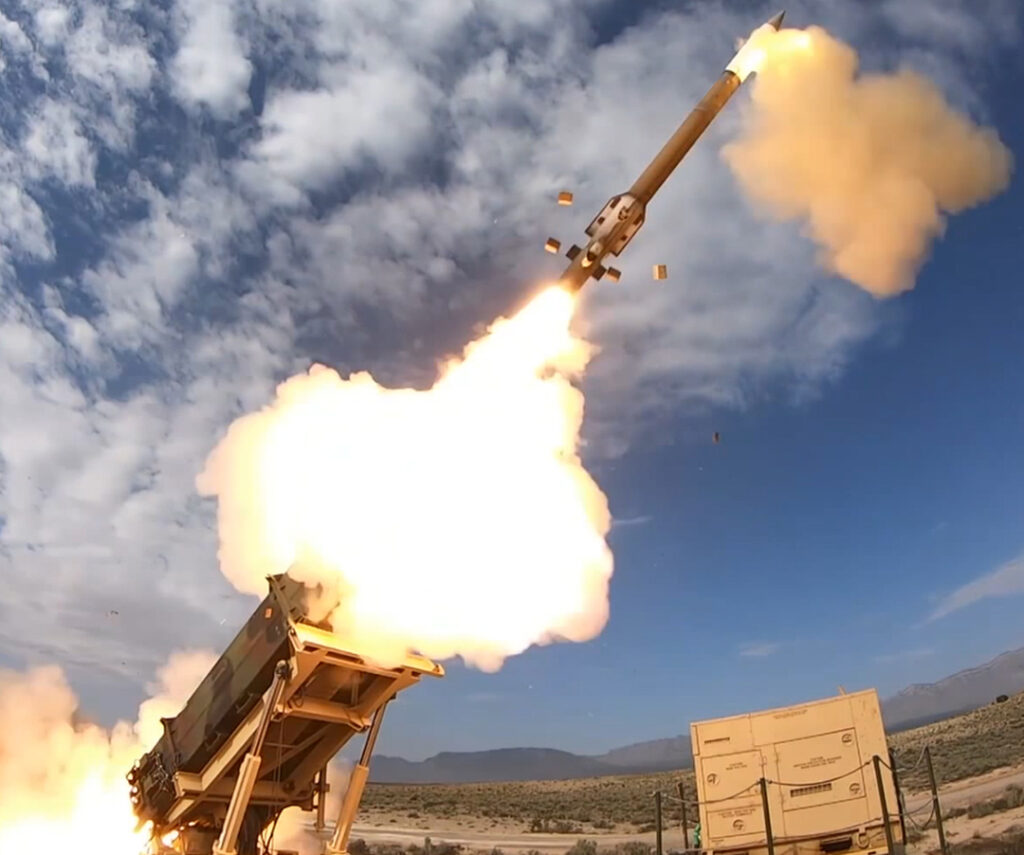THE WATCH STAFF
The U.S. Army’s Integrated Battle Command System (IBCS) recently defeated incoming missiles in two separate flight tests — a step toward realizing Joint All-Domain Command and Control (JADC2).
The successful tests were carried out March 17, 2022, at White Sands Missile Range in New Mexico, IBCS manufacturer Northrop Grumman announced. The goal of the IBCS is to connect different types of missile-defense assets to improve command and control.
JADC2 is the U.S. Department of Defense’s concept to connect sensors from all the military services — Air Force, Army, Marine Corps, Navy and Space Force — into one network, according to a January 21 report from the Congressional Research Service (CRS).
The tests, part of the system’s initial evaluation, come after the U.S. Army awarded Northrop Grumman a five-year, U.S. $1.4-billion production contract in 2021, the website Breaking Defense reported March 17.
In the first flight test, the Army intercepted a tactical ballistic missile using IBCS, which received an early launch warning from space-based sensor data provided by Northrop Grumman’s Joint Tactical Ground Station (JTAGS), according to a March 17 company news release. IBCS established a track from the JTAGS data before ground-based sensors could detect the target, which provided increased situational awareness for the operators, the news release said.
(Pictured: A Patriot Advanced Capability-3 missile is launched during a recent successful Integrated Battle Command System flight test at White Sands Missile Range in New Mexico.)
During the second test, IBCS demonstrated its resilience when it defeated two cruise missiles in an “electronic attack environment,” according to the news release. IBCS continuously tracked the targets by fusing data from multiple sensors degraded by the electronic assault.
“That ability to successfully pass and fuse information from disparate platforms is at the core of what the U.S. is trying to achieve with Joint All-Domain Command and Control,” Breaking Defense said.
Soldiers from the 3rd Battalion, 43rd Air Defense Artillery Regiment operated the system during the tests. Northrop Grumman said a third flight test is scheduled for the fall, according to Breaking Defense. A production decision is scheduled for fiscal 2023.
“We continue to demonstrate our architecture’s power to leverage information from every domain, delivering unprecedented situational awareness and increased time and options to warfighters,” Christine Harbison, Northrop Grumman’s vice president and general manager for combat systems and mission readiness, said in a statement. “IBCS’… ability to connect legacy systems significantly helps to expand their mission capability.”
In 2021, the Army used IBCS at Project Convergence in Yuma, Arizona, to track and “engage” targets, including the use of the F-35 fighter aircraft to provide tracking data, according to Breaking Defense. During the exercise, IBCS participated in a “series of complex network and communications exercises” that included precision strike and integrated air- and missile-defense missions, Northrop Grumman said at the time.
U.S. Air Force Gen. Glen D. VanHerck, commander of U.S. Northern Command, has been an advocate for JADC2, saying that to defend against emerging threats from Russia and the People’s Republic of China, the U.S. must lead in domain awareness and information dominance.
“We need the ability to collaborate globally,” VanHerck has said, “across all domains in near real-time, or in real-time to present options to our nation’s leaders.”
IMAGE CREDIT: DARRELL AMES/U.S. ARMY

